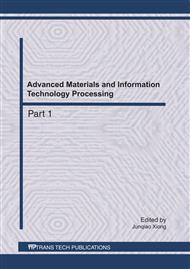p.1422
p.1425
p.1430
p.1434
p.1443
p.1447
p.1451
p.1455
p.1459
Middle School Students Creativity Assessment with Neural Networks
Abstract:
Williams Creativity Test B (WCTB) and Adolescent Scientific Creativity Scale (ASCS) were used to measure the creative affective and scientific creativity for 550 middle school students. SOM network was used to cluster the measurement data of scientific creativity. 550 middle school students were clustered to three categories. In these students, 70% of them were used as training group, and the other as testing group. Probabilistic neural network (PNN) and multinomial logistic regression (MLR) were used for modeling and testing. Risk-taking, curiosity, imagination and complexity scores used as input and independent variable, scientific creative categories used as output and dependent variable. The result showed the Percent Correct (PC) of PNN was higher than the PC of MLR.
Info:
Periodical:
Pages:
1443-1446
Citation:
Online since:
July 2011
Authors:
Keywords:
Price:
Сopyright:
© 2011 Trans Tech Publications Ltd. All Rights Reserved
Share:
Citation:


